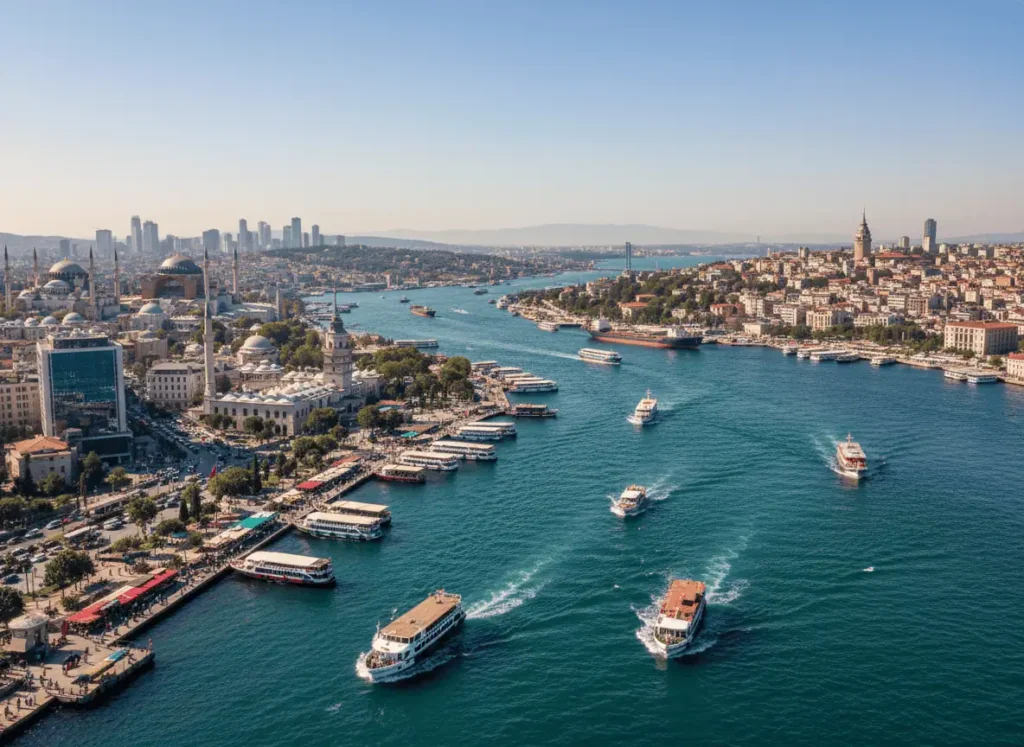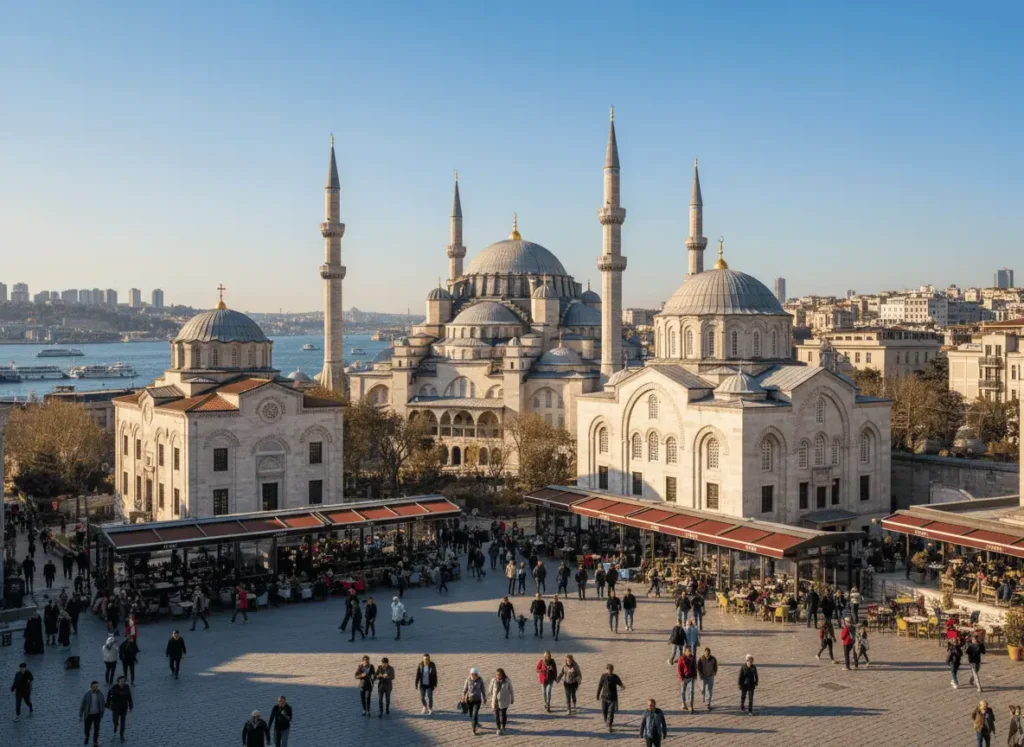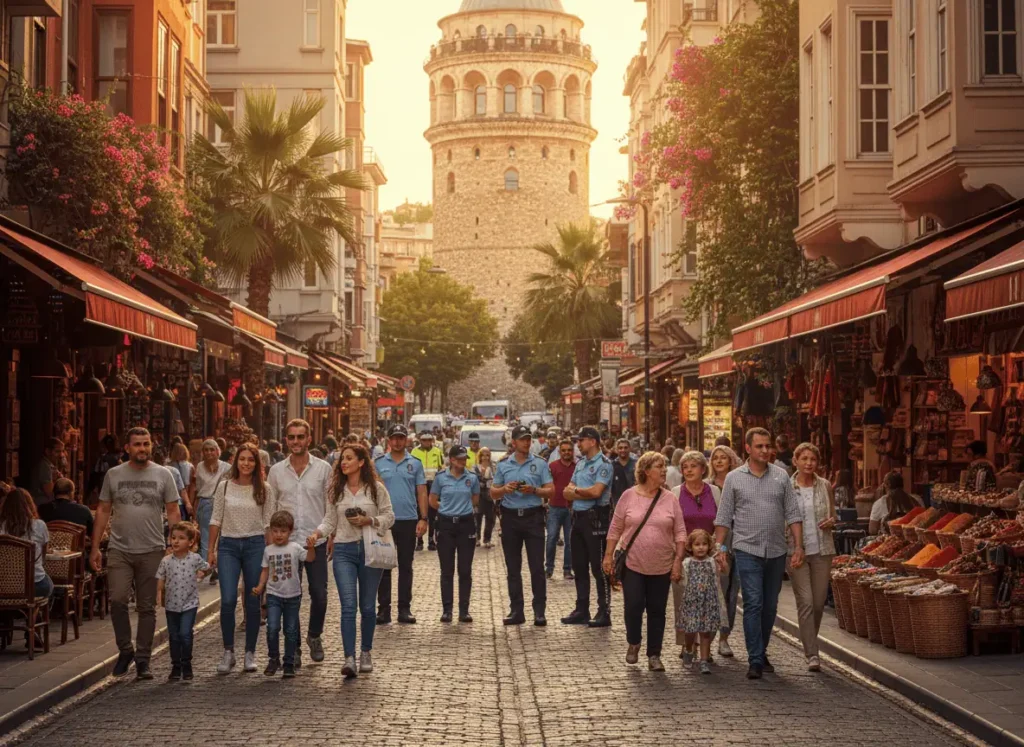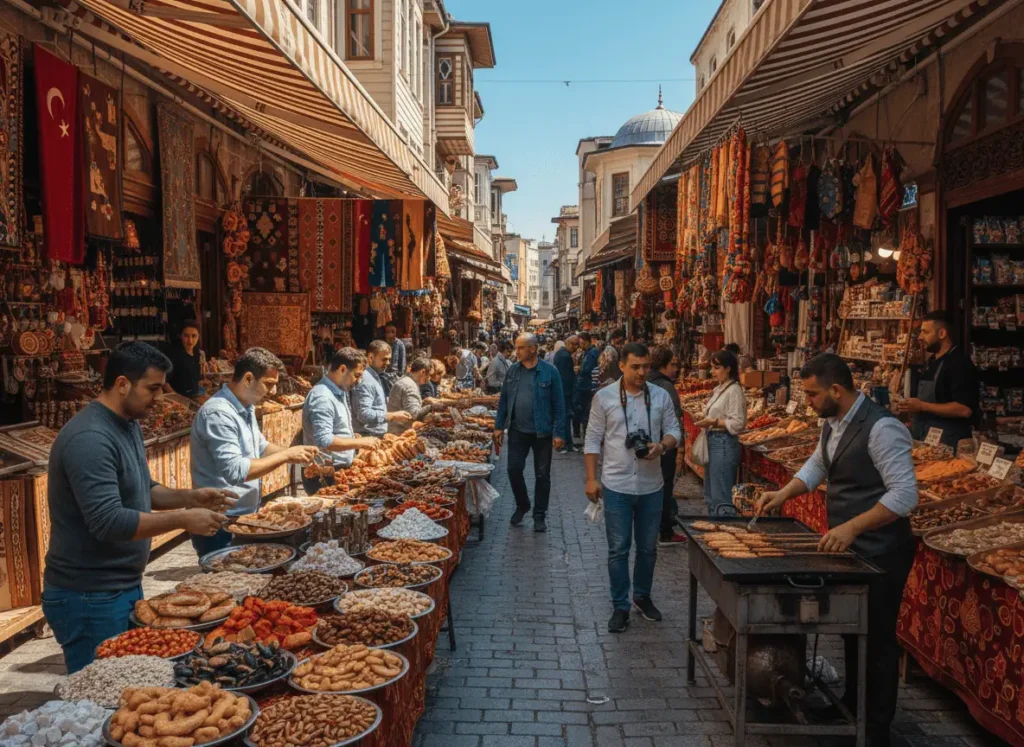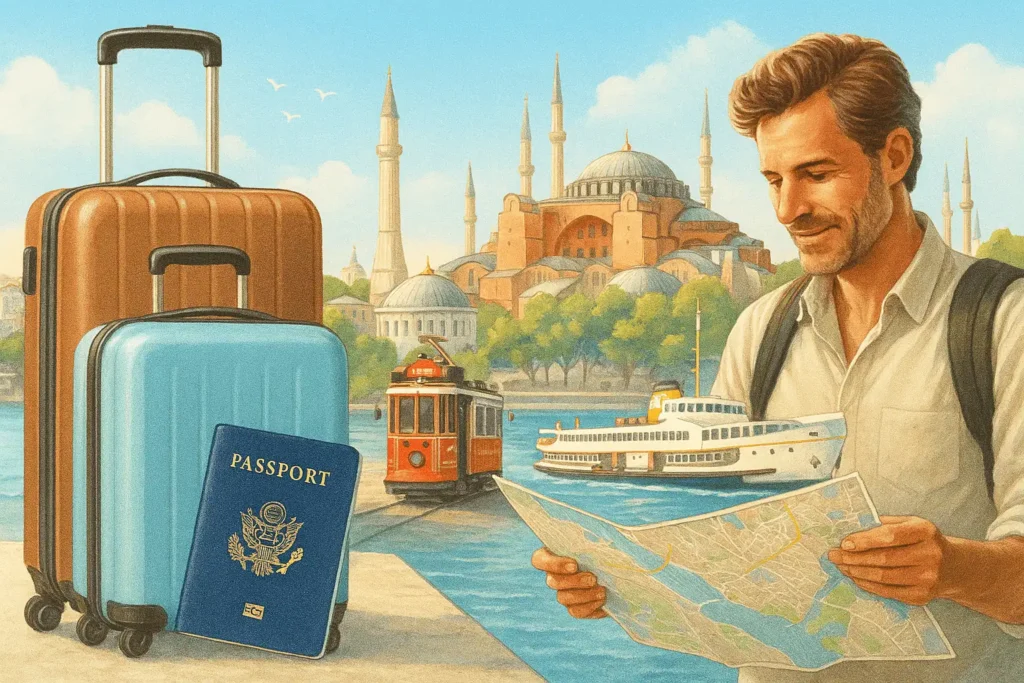Istanbul is one of the most iconic cities in the world, a place where millions instantly picture grand mosques, bustling bazaars, vibrant streets, and the legendary Bosphorus. Its rich history and unique position between Europe and Asia make it a global attraction for travelers, culture lovers, and history enthusiasts. Because of this worldwide popularity, Istanbul often becomes a city people talk about long before they ever visit it.
But with this attention comes something else: myths and misconceptions. Many assumptions about Istanbul are shaped by outdated information, movies, social media, or quick travel impressions. Some people imagine it as a purely traditional city, others think it’s overly modern, and some even confuse it with the rest of Turkey entirely. These mixed signals create a long list of misunderstandings that can mislead visitors and distort the true character of the city.
This article aims to clear the confusion by breaking down the most common myths about Istanbul and revealing the real facts behind them. Whether you’re planning a trip or simply curious about what life is truly like in this incredible city, this guide will help you understand Istanbul with clarity, accuracy, and an open mind.
Why Istanbul Attracts Myths About Istanbul and Misconceptions
Istanbul is not just any major city; it’s a rare blend of cultures, histories, and lifestyles that naturally invites curiosity. Because of this complexity, the city often becomes the subject of myths, stories, and half-truths that don’t always match reality.
One of the biggest reasons is its unique location between Europe and Asia. Istanbul is literally the bridge where two continents meet, and this “East meets West” identity often leads people to create their own interpretations of what the city should look or feel like. Some expect it to be entirely Eastern and traditional, while others assume it’s fully Western and modern. In truth, Istanbul is a vibrant mix of both, and this blend often leaves room for misunderstanding.
Another major factor is Istanbul’s long and layered history. From its early days as Byzantium to its rise as Constantinople and its transformation into the Istanbul we know today, the city has gone through some of the most important chapters in world history. This historical depth sometimes causes visitors to imagine a city frozen in time, while others think it has moved past its heritage entirely. Both assumptions are far from accurate.
Its diverse culture also plays a role. Istanbul is home to millions of people from different backgrounds, traditions, and lifestyles. This cultural mosaic creates a dynamic environment where modern cafes sit near ancient monuments, and traditional markets coexist with contemporary art galleries. To outsiders, this mix can feel confusing, making it easy to form quick assumptions that don’t fully represent the city.
Lastly, Western media influence has shaped many perceptions about Istanbul. Movies, TV shows, and travel blogs often highlight only one version of the city—either overly exotic or overly modern. These selective portrayals contribute to myths that spread quickly across the world.
Because of these factors, Istanbul becomes a city people think they know, even if they’ve never visited. Understanding these reasons helps explain why so many misconceptions exist—and why it’s important to view the city with an open and informed perspective.
Myth 1: “Istanbul Is the Capital of Turkey”
One of the most common misconceptions people have is the belief that Istanbul is the capital of Turkey. This myth exists for a simple reason: Istanbul is the country’s most famous and most populated city. With its global visibility, historical significance, and unmatched cultural influence, many naturally assume it must also be the political center.
But in reality, Ankara is the true capital of Turkey. The capital was moved from Istanbul to Ankara in 1923 by Mustafa Kemal Atatürk, the founder of modern Turkey. Ankara was chosen because of its central location, strategic advantages, and symbolic importance in building a new republic. Since then, it has served as the administrative and political heart of the nation, hosting government institutions, parliament, embassies, and official ministries.
Still, Istanbul remains the economic, cultural, and social powerhouse of Turkey. It’s the country’s main business hub, tourism leader, and historical treasure. Its ports, universities, global companies, and artistic communities make it the city most visitors know and remember. This is why the confusion continues—while Ankara holds political authority, Istanbul dominates global perception.
In the end, understanding the difference provides clarity: Ankara is the capital, but Istanbul is the face of Turkey, a city that blends history, modern life, and international energy like no other.
Myth 2: “Istanbul Is a Completely Islamic City”
Another widespread misunderstanding is the belief that Istanbul is a completely Islamic city, shaped only by religious traditions. While Islam is the dominant religion in Turkey, this assumption ignores the true identity of Istanbul—a city built on diversity, history, and coexistence.
The reality is that Istanbul has always been a multicultural society. For centuries, it has been home to Muslims, Christians, Jews, Armenians, Greeks, and many other communities. This mix shaped the food, architecture, customs, and neighborhoods that still give the city its unique character today. Walking through Istanbul feels like stepping through different cultural layers where old traditions and modern life blend seamlessly.
Turkey is also a secular country, and Istanbul reflects this clearly. People practice their beliefs freely, but religion does not dictate public life. You’ll find locals living modern lifestyles, enjoying cafés, universities, workplaces, concerts, festivals, and social events just like any major global city.
Istanbul is also home to churches, synagogues, and historical sites that highlight its religious diversity. The Bulgarian St. Stephen Church, the historic Neve Shalom Synagogue, and countless Byzantine structures stand alongside famous mosques, reminding visitors of the city’s plural identity. This balance is a natural part of Istanbul’s charm.
For many travelers, the biggest surprise is the city’s vibrant nightlife and contemporary lifestyle. Areas like Kadıköy, Beyoğlu, Karaköy, and Beşiktaş are filled with bars, music venues, art studios, rooftop lounges, and creative spaces that reflect a youthful, energetic urban culture.
So no—Istanbul is not a “completely Islamic city.”
It’s a diverse, secular, and modern metropolis where history, culture, and lifestyles blend in a way few cities in the world can match.
Myth 3: “Istanbul Is Unsafe for Tourists”
A common myth that often worries first-time travelers is the belief that Istanbul is unsafe for tourists. This perception usually comes from isolated incidents shared online or outdated stories that don’t reflect today’s reality. In truth, Istanbul is one of the most visited cities in the world, welcoming millions of tourists every year, and the majority experience a smooth and enjoyable trip.
While every major city has occasional issues, Istanbul is generally safe for tourists, especially in well-known districts. The city has a strong tourism infrastructure, active police presence in busy areas, and well-lit public spaces that make it comfortable for visitors to explore.
Actual Safety Overview
Without relying on exaggerated claims, most travel advisories consider Istanbul moderately safe, similar to other large European cities. Petty theft can happen in crowded areas, but violent crime involving tourists is rare. Popular neighborhoods like Sultanahmet, Taksim, Galata, Kadıköy, Üsküdar, Beşiktaş, and Karaköy are full of travelers, restaurants, hotels, and nightlife—making them lively and secure.
Popular Areas Tourists Love
These districts are known for being both safe and vibrant:
-
Sultanahmet – historic center with major landmarks
-
Galata & Karaköy – cafés, views, nightlife
-
Taksim & Istiklal Street – shopping and entertainment
-
Kadıköy – relaxed Asian-side district with a youthful vibe
-
Üsküdar – scenic waterfront and quieter neighborhoods
These areas stay active day and night and are regularly patrolled.
Tips for General City Travel Safety
A few simple habits help you stay safe, just like in any big city:
-
Keep your belongings secure in crowded areas.
-
Avoid unofficial taxis—use apps or marked cabs.
-
Stay in well-lit, populated streets at night.
-
Be cautious of overly friendly strangers offering tours or deals.
-
Learn basic directions so you know where you’re going.
With basic awareness, Istanbul is a comfortable and welcoming destination. The idea that the city is dangerous is more myth than truth. For millions of travelers every year, Istanbul is safe, exciting, and unforgettable.
Myth 4: “Istanbul Is Always Crowded and Chaotic”
One of the most repeated misconceptions about the city is that Istanbul is always crowded, loud, and chaotic. While it’s true that Istanbul is a major global metropolis with a population of over 15 million, the idea that every corner of the city is packed all the time is far from accurate.
A Balanced Reality: Busy Zones vs Peaceful Districts
Istanbul has certain areas—like Taksim, Eminönü, Sultanahmet, and Istiklal Street—that are almost always busy. These places attract tourists, students, and locals, making them vibrant and energetic. Because visitors usually spend most of their time in these famous spots, they often assume the entire city feels the same way.
But outside these hubs, there are many quiet, calm districts where life moves slowly and peacefully. Residential areas on both the European and Asian sides offer a completely different atmosphere, and locals enjoy parks, seaside promenades, and neighborhood cafés without the constant rush.
Parks, Neighborhoods, and Bosphorus Peace
If you explore beyond the tourist hotspots, you’ll find some of the most tranquil places in the city:
-
Moda (Kadıköy) – relaxed seaside walks, sunset views
-
Arnavutköy & Bebek – calm Bosphorus neighborhoods
-
Emirgan Park – one of the largest and most peaceful green spaces
-
Çengelköy – small-town charm on the Asian side
-
Üsküdar coastline – perfect for quiet morning strolls
-
Belgrad Forest – huge natural area for hiking and cycling
These spots show a softer side of Istanbul that tourists sometimes miss.
Why Tourism Boosts the Perception
The idea of constant crowds comes mainly from tourism patterns. Most travelers stick to key attractions that naturally get congested, especially during peak seasons. When millions visit the same landmarks, it can create an impression that the entire city is like that. In reality, they’re seeing only a small slice of Istanbul’s true rhythm.
The truth is this: Istanbul is both lively and peaceful, depending on where you go. It’s a city of contrasts, offering the energy of a major global hub and the calm charm of hidden local corners.
Myth 5: “Istanbul Is Too Expensive to Visit”
Another common belief among travelers is that Istanbul is too expensive to visit. Because the city is well-known and highly visited, many assume it costs the same as major European capitals like Paris, London, or Rome. But the truth is, Istanbul can be surprisingly budget-friendly, and it offers a wide range of options for every type of traveler.
A Realistic Budget Comparison
Istanbul’s overall travel cost is flexible. If you choose luxury hotels, fine dining, or private tours, your spending will naturally increase. But for most visitors, everyday expenses—like food, transportation, and sightseeing—are often much cheaper than in many Western cities.
Even mid-range travelers can enjoy:
-
Comfortable hotels at reasonable prices
-
Delicious meals without overspending
-
High-quality service at lower costs compared to Europe
This makes Istanbul a great destination for both budget travelers and those seeking value for money.
Affordable Transportation, Food, and Attractions
Istanbul’s public transportation is one of the city’s biggest strengths. Metro lines, trams, ferries, and buses connect almost every district efficiently and cheaply. A short ferry ride across the Bosphorus costs less than a cup of coffee in many global cities.
Food is also very accessible. Whether you choose street food like simit, kumpir, and doner, or traditional restaurants serving full meals, you can eat well without spending much. Even cafés and dessert shops offer affordable treats without compromising taste or quality.
As for attractions, many major sights—like mosques, bazaars, viewpoints, and parks—are low-cost or completely free. Museums and palaces have entrance fees, but they’re still reasonable compared to other tourist destinations around the world.
How Tourists Can Save Money
Travelers can stretch their budget easily with a few simple tips:
-
Use public transport instead of taxis.
-
Explore free attractions like mosques, coastlines, and local neighborhoods.
-
Eat at local restaurants instead of tourist-heavy zones.
-
Buy an IstanbulKart for discounted transport fares.
-
Stay in districts like Kadıköy or Fatih for more affordable accommodation.
With smart planning, Istanbul becomes not only accessible but one of the best-value destinations you can visit.
The myth that Istanbul is extremely expensive comes mostly from assumptions—not reality. With a bit of planning, the city offers comfort, culture, and unforgettable experiences without breaking your budget.
What to Know Before Visiting Istanbul
Before you visit Istanbul, a few simple tips can make your trip smoother. From the best time to travel to basic etiquette, knowing these essentials helps you enjoy the city like a pro.
Best Time to Visit
The ideal seasons are:
-
Spring (April–June) – perfect weather
-
Autumn (Sept–Nov) – warm days, fewer crowds
Summer is busy and hot, while winter is quieter and cheaper.
Entry Rules
Most travelers can enter Turkey visa-free or with a quick e-Visa.
Make sure your passport is valid for at least six months beyond your travel dates. Requirements vary by country, so check before flying.
Local Etiquette
Istanbul is modern and relaxed, but a few basics help:
-
Dress modestly only when entering mosques.
-
Remove shoes inside mosques.
-
A simple “Merhaba” is a friendly way to greet locals.
-
Bargaining is normal in markets.
Money Tips
-
Currency: Turkish Lira (TRY)
-
Cards work almost everywhere, but carry some cash for small shops.
-
ATMs are safe and easy to find.
-
Exchange money in the city, not at the airport.
These simple guidelines will help you feel comfortable and confident from the moment you arrive.
Conclusion
Istanbul is a city full of history, culture, and diversity, and many of the myths surrounding it simply don’t match reality. Throughout this guide, we cleared up common misconceptions—whether about safety, culture, cost, crowds, or the belief that Istanbul is the capital. Understanding the real Istanbul helps travelers appreciate the city for what it truly is: vibrant, welcoming, modern, and deeply rooted in its rich past.
If you’re planning a visit, go with an open mind and explore the city beyond the stereotypes. Wander through its peaceful neighborhoods, enjoy its food, meet the locals, and see the blend of old and new for yourself.
If you found this guide helpful, feel free to share it with others or read more of our Istanbul travel articles to plan your trip with confidence.

